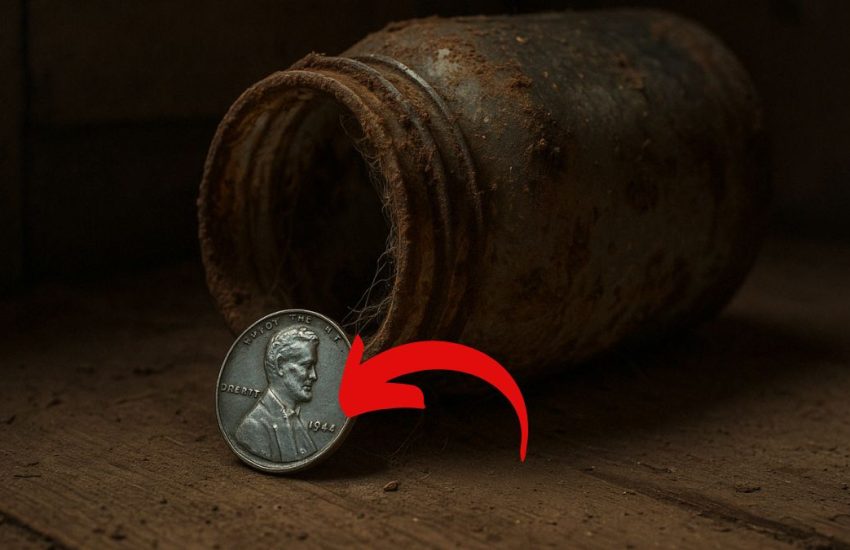In an astonishing turn of events, a rare 1944 Steel Wheat Penny discovered in a rusted jar has captivated the numismatic community by selling for over $400,000 at auction.
This unexpected find underscores the potential value hidden in everyday items and the enduring allure of rare coins.
The 1944 Steel Penny: A Wartime Anomaly
During World War II, the U.S. Mint faced a copper shortage due to its necessity in wartime manufacturing. As a result, in 1943, pennies were struck using zinc-coated steel planchets.
However, in 1944, the Mint reverted to the traditional copper composition. Despite this, a few steel planchets from 1943 were inadvertently used in 1944, resulting in the creation of the rare 1944 Steel Wheat Penny.
Rarity and Significance
The 1944 Steel Penny is considered one of the most elusive coins in U.S. history. Estimates suggest that only 30 to 40 authentic examples exist across all mints.
Their rarity, combined with the historical context, makes them highly sought after by collectors.
Discovery in a Rusted Jar
The recent discovery occurred during an estate appraisal in Pennsylvania. A rusted jar, untouched since the 1960s, contained a collection of coins, among which was the rare 1944 Steel Wheat Penny.
Upon authentication, the coin was confirmed to be genuine and in near-mint condition, sparking significant interest in the numismatic community.
Auction Highlights
The authenticated 1944 Steel Penny was presented at a prominent auction, where it garnered intense bidding.
The final sale price exceeded $400,000, reflecting the coin’s rarity and pristine condition. This sale has set a new benchmark for similar coins and has reignited interest in rare penny collections.
Identifying a 1944 Steel Penny
To determine if you possess a genuine 1944 Steel Penny, consider the following characteristics:
- Color and Appearance: Steel pennies have a silver-gray hue, unlike the reddish-brown of copper pennies.
- Magnet Test: Steel is magnetic. If your 1944 penny is attracted to a magnet, it may be steel.
- Weight: A steel penny weighs approximately 2.7 grams, whereas a copper penny weighs about 3.11 grams.
- Mint Mark: Check for mint marks under the date. “D” indicates Denver, and “S” signifies San Francisco.
Notable 1944 Steel Penny Sales
| Mint Mark | Grade | Auction Price | Auction Date | Notable Features |
|---|---|---|---|---|
| None (Philadelphia) | MS64 | $180,000 | June 2021 | High-grade example |
| “D” (Denver) | MS63 | $115,000 | August 2007 | Rare Denver mint |
| “S” (San Francisco) | MS66 | $408,000 | August 2021 | Only known Mint State example |
The discovery and subsequent sale of the 1944 Steel Wheat Penny found in a rusted jar serve as a compelling reminder of the hidden treasures that may reside in everyday items.
Collectors and enthusiasts are encouraged to examine their coin collections closely, as even the most unassuming coins can hold significant value.
FAQs
Why is the 1944 Steel Penny so valuable?
Its value stems from its rarity, historical significance, and the fact that it was a minting error during a pivotal time in U.S. history.
How many 1944 Steel Pennies are known to exist?
Estimates suggest that only 30 to 40 authentic examples exist across all mints.
How can I verify if my 1944 penny is made of steel?
Conduct a magnet test (steel is magnetic), check its color (silver-gray), and weigh it (approximately 2.7 grams).
Where can I get my coin authenticated?
Professional services like the Professional Coin Grading Service (PCGS) or the Numismatic Guaranty Company (NGC) offer authentication and grading services.

